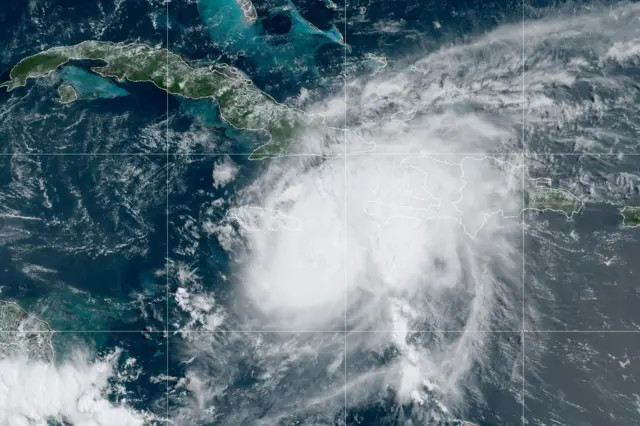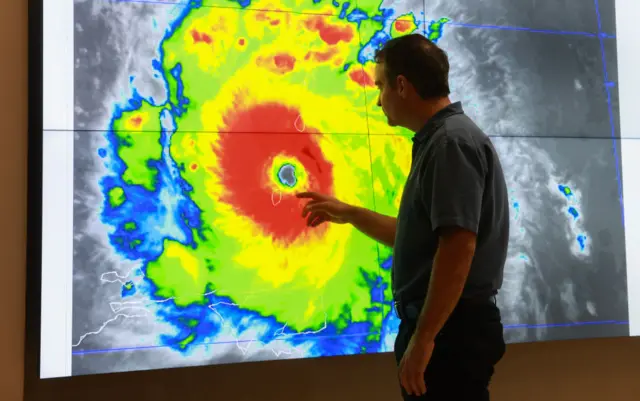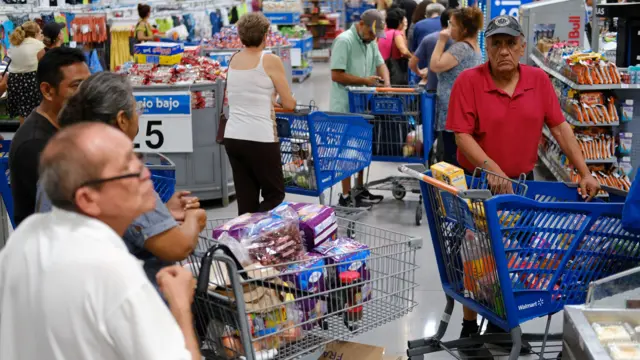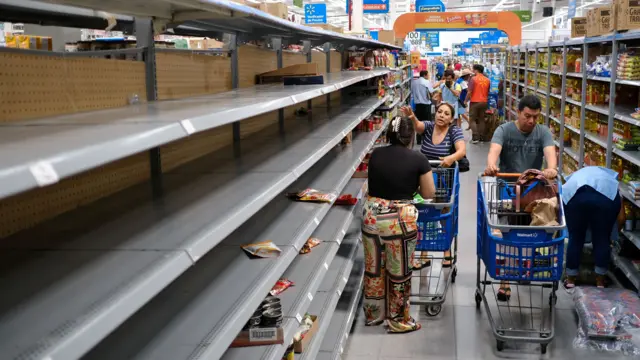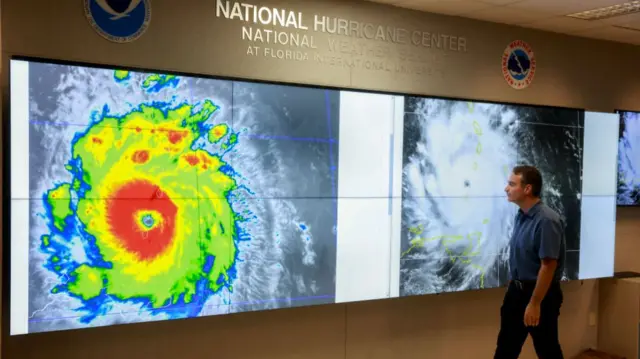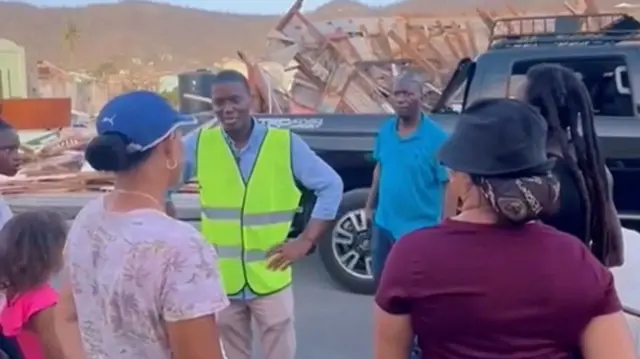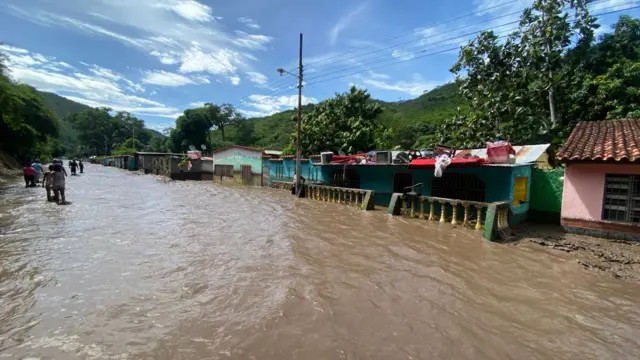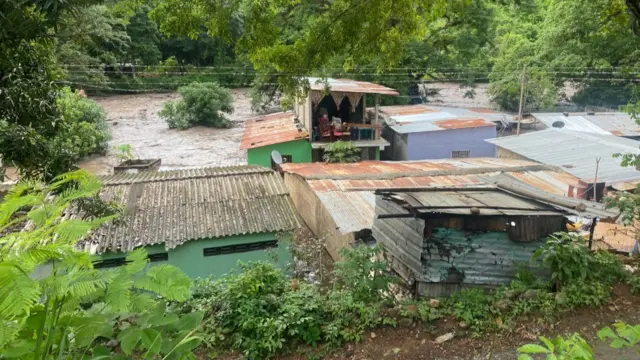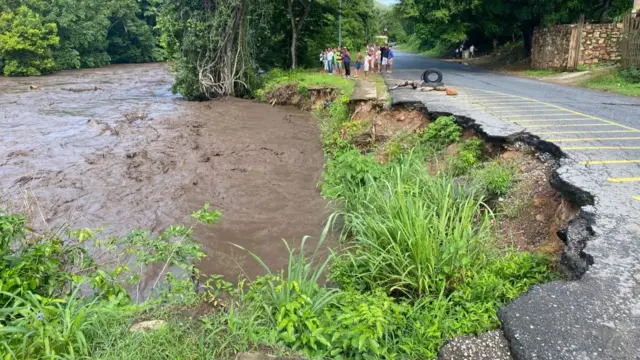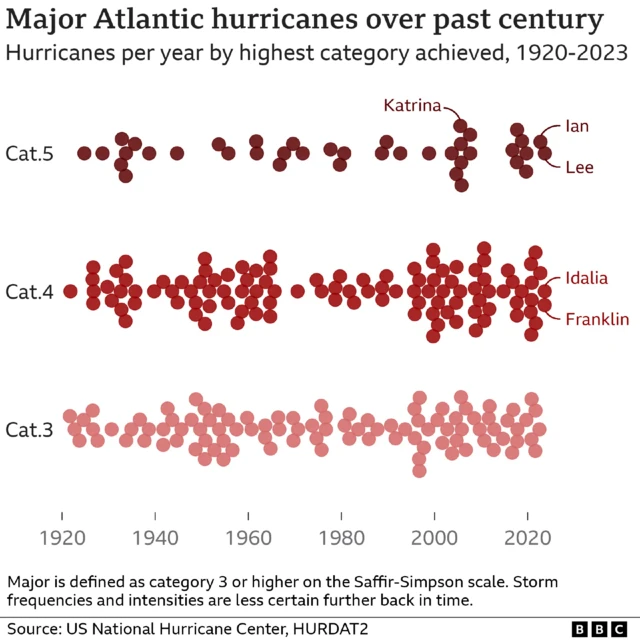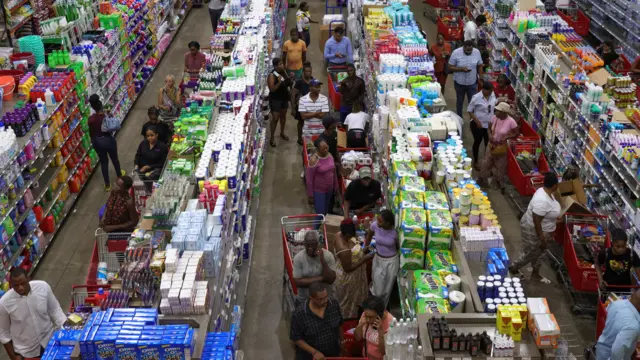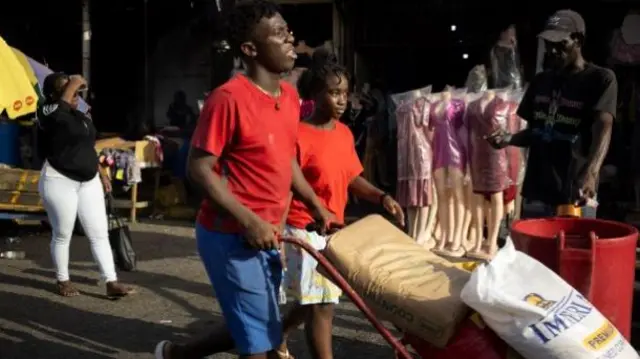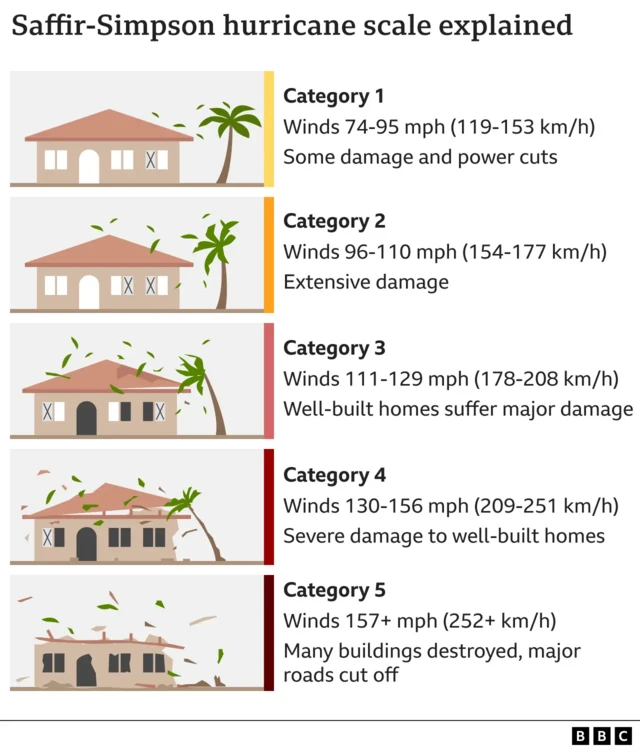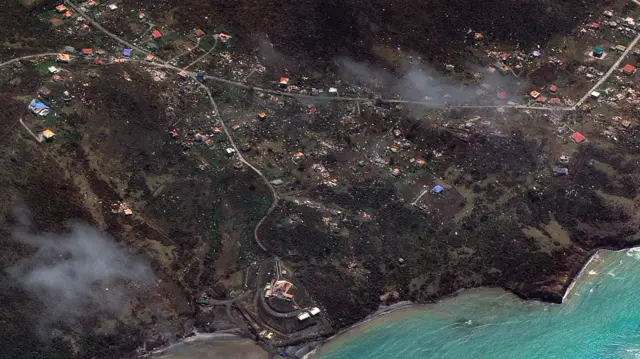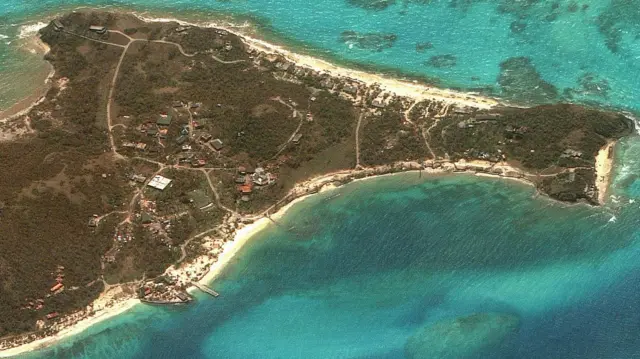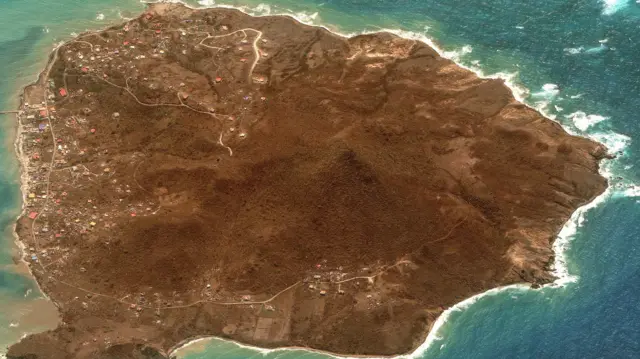'Life-threatening' storm surge expected to hit Jamaica soonpublished at 16:31 BST 3 July 2024
Soon, the core of Hurricane Beryl is expected to pass near or over the Southern part of Jamaica, a US National Hurricane Center spokesman says.
"Gusts well into category three or category four hurricane range, across much of the island... (will be) here in the next few hours," Dr Michael Brennan says.
That means windspeeds up to 249km/h (155mph).
"We're also concerned for potentially life-threatening storm surge inundation... pushing water levels six to nine feet (up to 2.7m) above normal," Brennan says.
He is strongly advising people to shelter in place through the evening.
